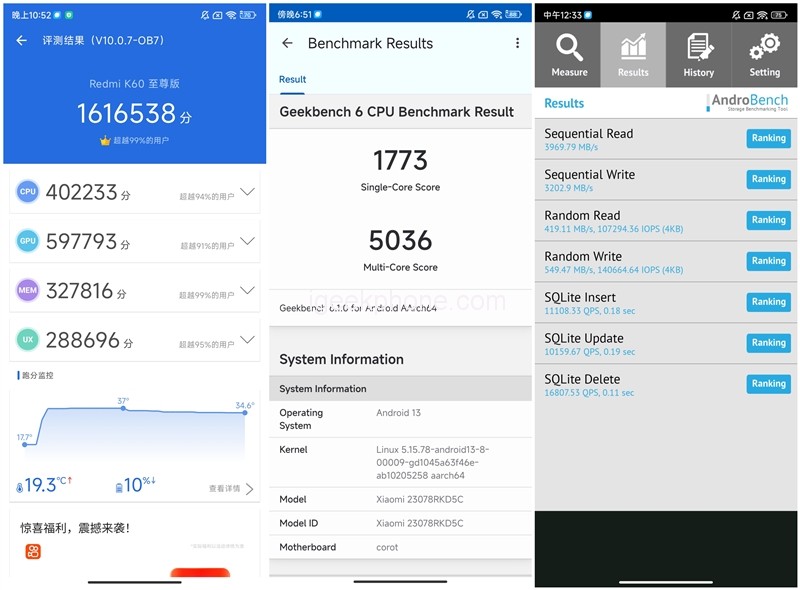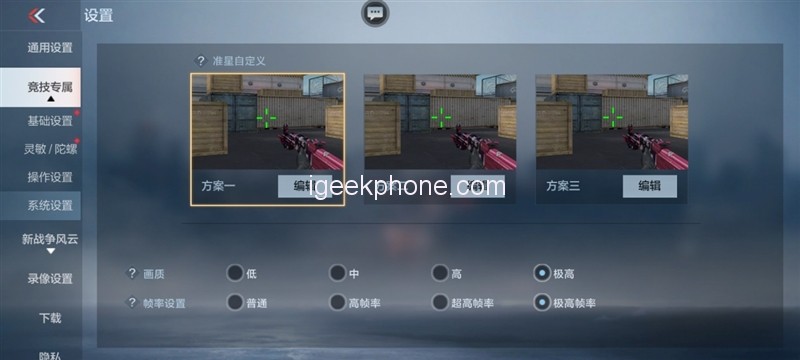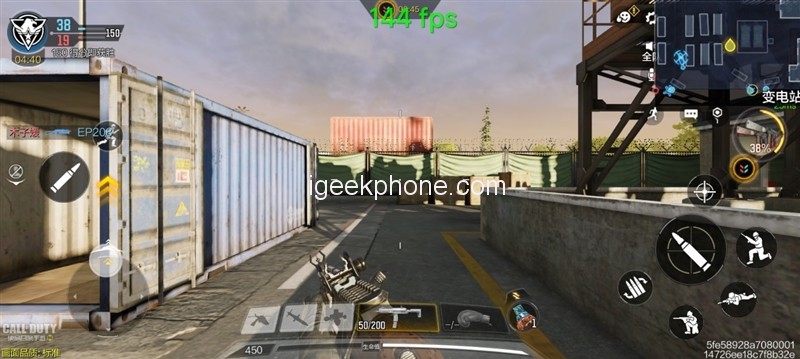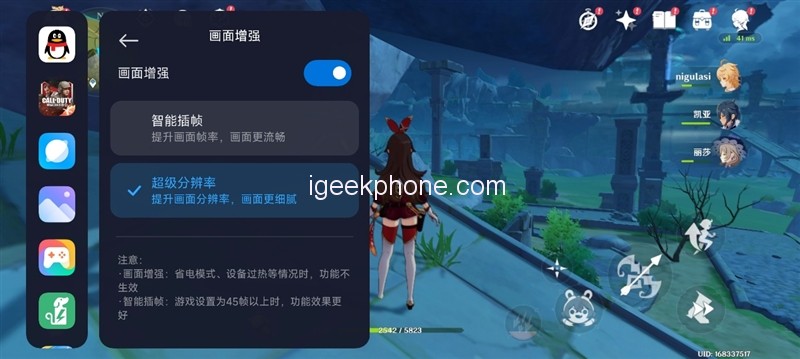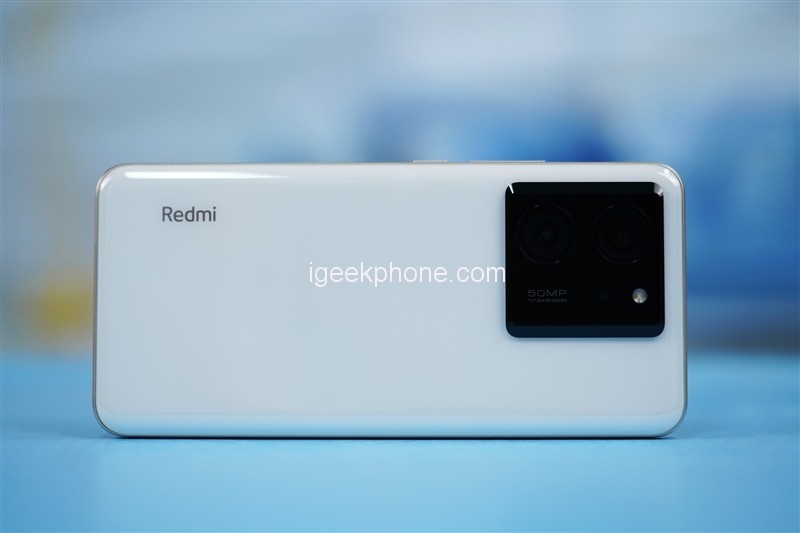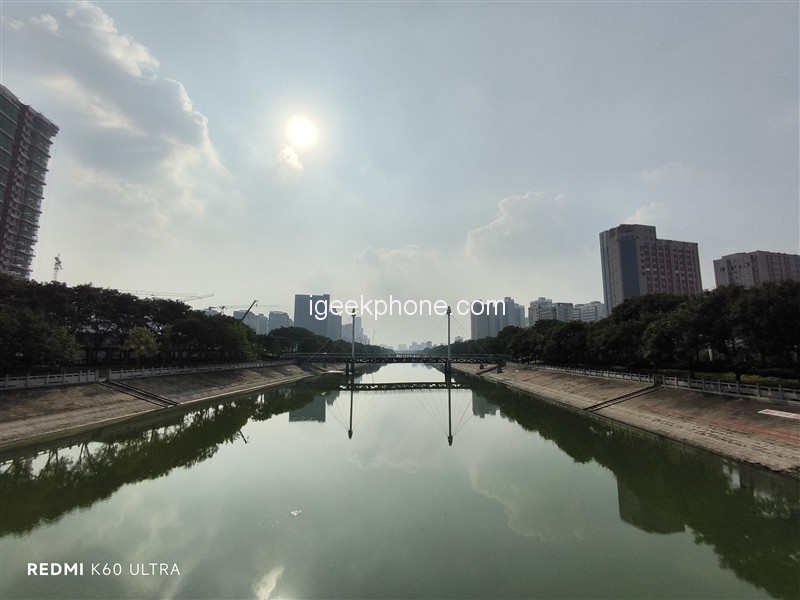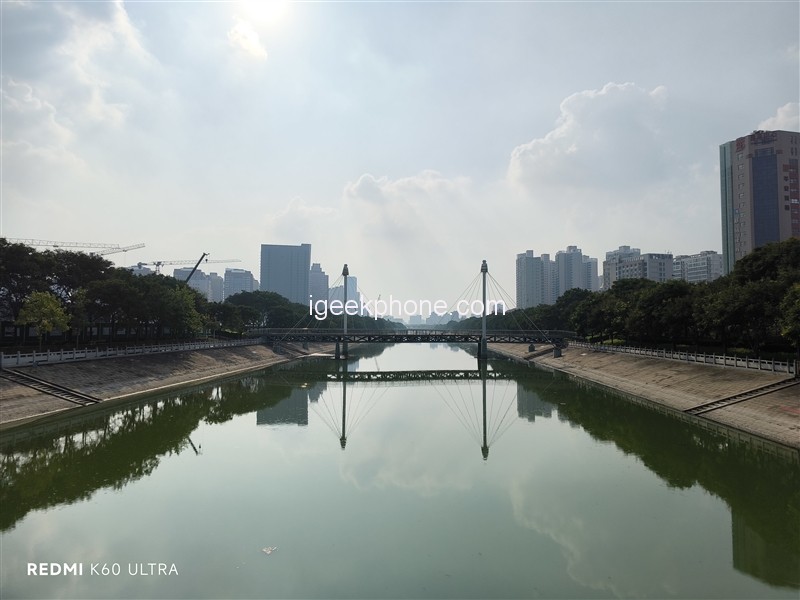Since Redmi became independent, the word “cost-effectiveness” has been engraved in its genes, but relying solely on cost-effectiveness obviously cannot satisfy users with increasingly sophisticated tastes.
Therefore, before the product’s launch, Redmi and MediaTek held a “post-performance era” strategic conference. This time, the new generation of Redmi flagship will no longer be synonymous with cost performance but the double King of cost performance and performance.
Let’s look at the specifications of the flagship new phone, the King of double kings.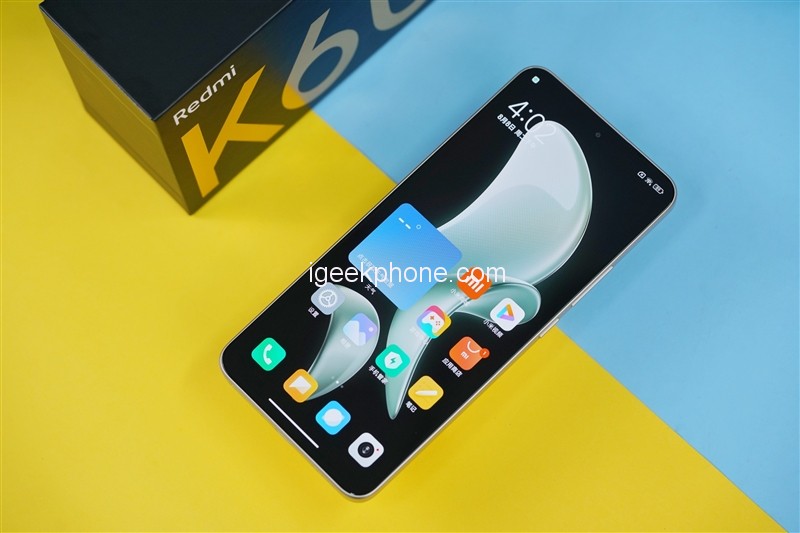
The Redmi K60 Ultra debuts MediaTek’s most robust chip Dimensity 9200+, which introduces Pixelwork’s independent display chip, with up to 24GB LPDDR5X memory and 1TB UFS 4.0 storage.
The Dimensity 9200+ chip, combined with the new independent display chip X7 and Redmi’s exclusive violent engine 2.0 as the middle link, make the Redmi K60 Ultra performance tuning reach an unprecedented new height. Because of this independent display chip, It breaks our previous inherent impression of “high delay, no follow-up, and no obvious improvement in fluency” of frame interpolation.
Secondly, regarding the screen, the Redmi K60 Ultra is equipped with the same Huaxing Optoelectronics C7 luminescent material as the Mi 13 Ultra. Its local peak brightness has reached the industry’s highest 2600nit, 1.5K resolution, a maximum refresh rate of 144Hz, and a high frequency of 2880Hz. PWM dimming constitutes a unique, high-quality screen.
In addition, the K60 Ultra inherits the 120W Immortal Second Charge of the K60 Pro. For the first time, the surging G1 battery management chip is released, and combined with the surging P1 fast charging chip, it not only ensures the charging speed but also prolongs the battery life.
Finally, the Redmi K60 Ultra is also Redmi’s first mobile phone that supports IP68 dustproof and waterproof and supports staying in still water at a depth of 1.5 meters for 30 minutes, thus ensuring the waterproof performance of the mobile phone.
Design & Appearance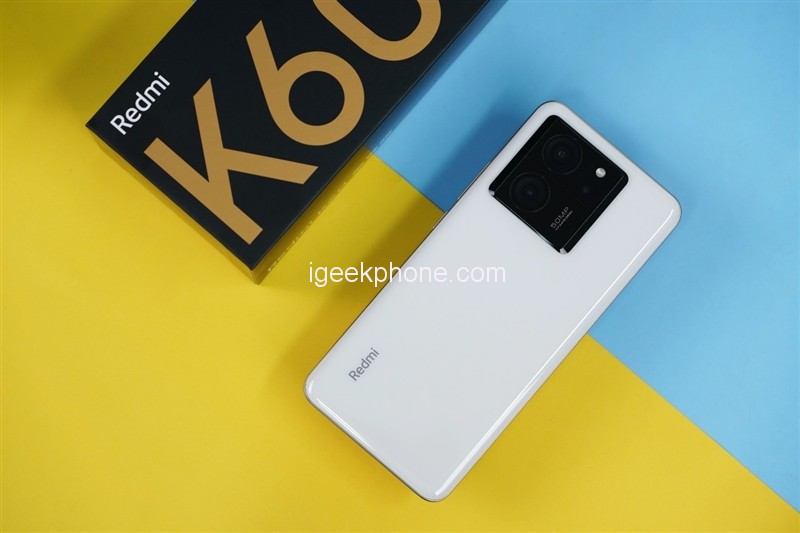
The Redmi K60 Ultra is equipped with a 6.67-inch Huaxing Optoelectronics screen on the front, using the same Huaxing Optoelectronics C7 luminescent material as Mi 13 Ultra, with 1.5K (2712×1220) resolution, native 12bit color depth (67.8 billion colors), color display Fine, overly smooth.
The mobile phone screen supports up to 144Hz refresh rate and 480Hz touch sampling rate, 2880Hz high-frequency PWM dimming, static contrast ratio of 5000000:1, and full-screen excitation brightness reaches 1200nits.
Redmi canceled the plastic brackets on the four sides of the screen for the first time in the K60 Ultra mobile phone. The most intuitive feeling is that the screen ratio has dramatically increased.
The bottom of the phone adopts the COP packaging process, and the highly narrow border at the bottom realizes a visual effect that is almost as wide as the left and right sides.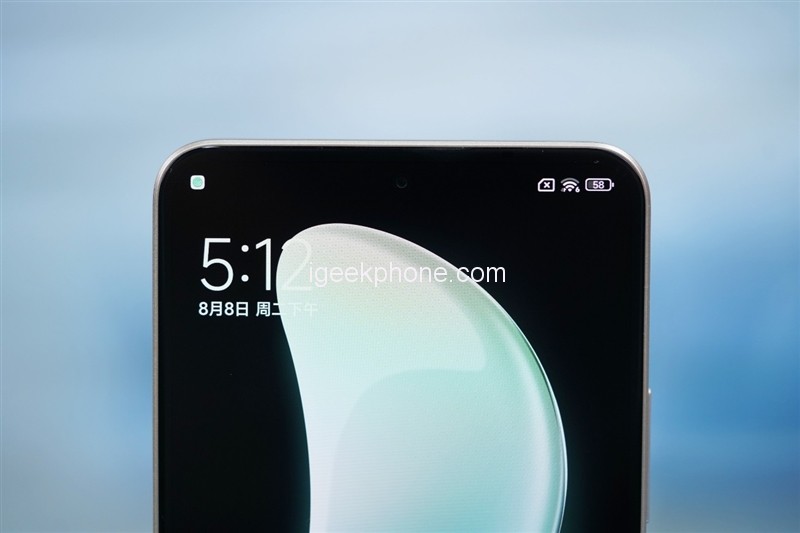
The color we got is Qingxue, with a snow-white base color, and the glass back cover has a ceramic texture, which is gentle under the sunshine.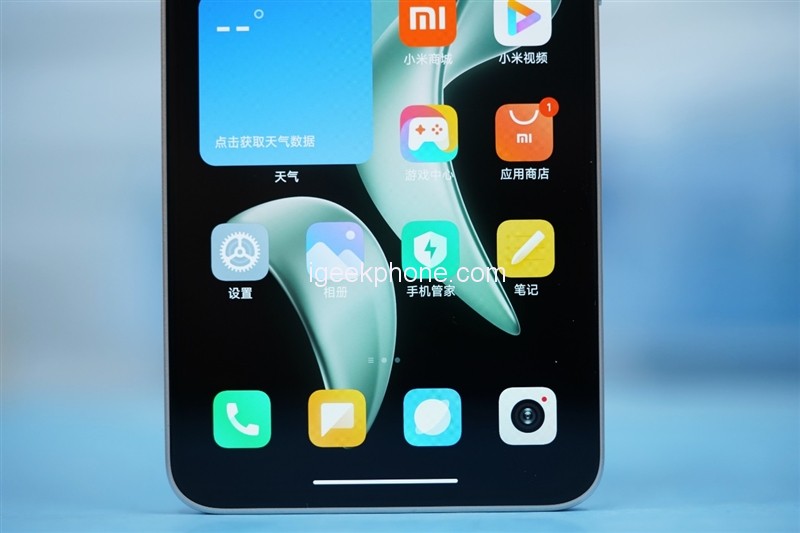
The K60 Ultra has three rear cameras; the primary camera is upgraded to the Sony IMX800 CMOS of the same model as the Mi 13, and there are two ultra-wide-angle and macro lenses.
The upper right corner of the camera is equipped with a single-color temperature LED fill light, and the opening next to it is the rear light sensor.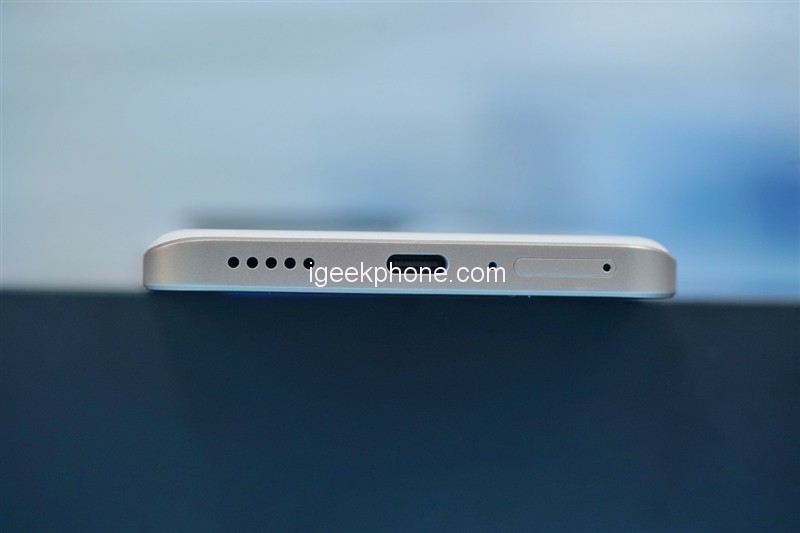
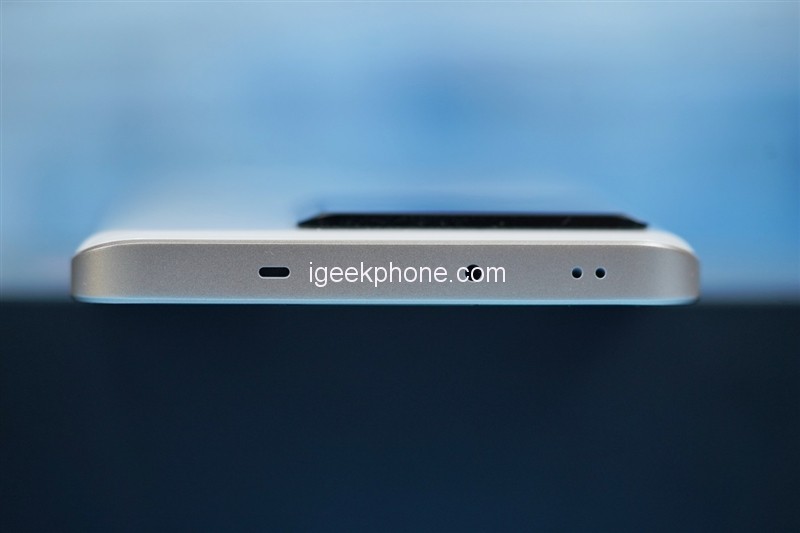
The top of the phone has an independent 1012 ultra-linear speaker, and to the right are infrared remote control sensors and two noise-canceling microphones.
The 1216 ultra-linear speaker at the bottom of the phone forms a stereo field with the speaker on the top, and to the right is the Type-C and earphone two-in-one interface, microphone, and SIM card slot.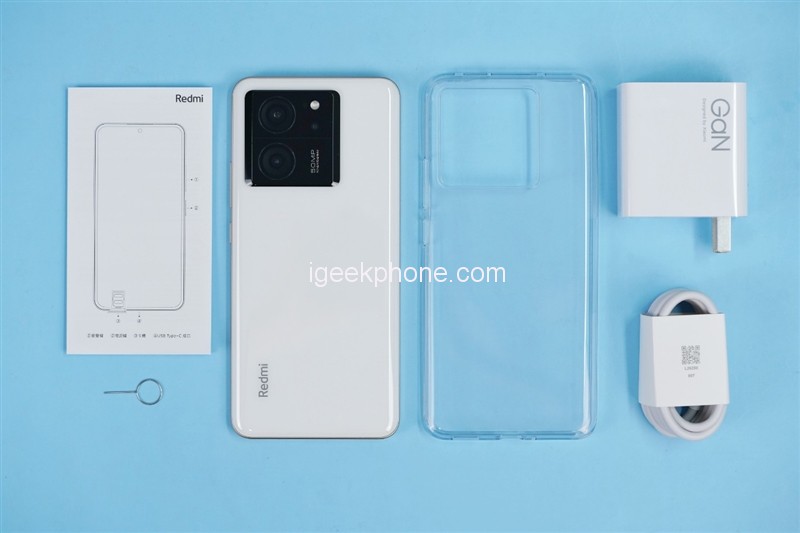
Inside the packaging box of the Redmi K60 Ultra, in addition to the phone body, a transparent silicone protective case, a 120W gallium nitride charging kit, a SIM card pin, and an instruction manual are also included.
Hardware and Performance
Redmi K60 Ultra uses the latest flagship platform of MediaTek, Dimensity 9200+ processor, TSMC N4P process, Cortex-X3 large-core central frequency increased to 3.35GHz, medium-core A715 increased from 2.8GHz to 3.0GHz, small-core A510 Increased from 1.8GHz to 2.0GHz.
In terms of GPU, the central frequency of the 11-core Mali G715 has been upgraded from 981MHz to 1.15GHz.
Performance Testing
The entire Redmi K60 Ultra comes standard with LPDDR5X 8533MHz memory + UFS 4.0 flash memory.
The K60 Ultra we have is a 12GB+512GB version. Next, we turn on the performance mode of the phone, turn off the memory expansion function, and conduct a set of theoretical benchmark tests on it.
In the AnTuTu V10 comprehensive test, the Redmi K60 Ultra ran a score of 1.616 million, an increase of about 18% compared to the K50 Ultra released in the same period last year, with a CPU score of 400,000+ and a GPU score of nearly 600,000.
In the GeekBench5 test, the single-core score is 1507, and the multi-core score is 4840. Compared with the Dimensity 9200, the single-core performance has increased by 5.5%, and the multi-core performance has increased by 8%. In the CPU single test, the GeekBench6 single-core score is 1773 points, and the multi-core score is 5036.
In the flash memory test, due to the support of MCQ multi-cycle queue technology, the sequential reading speed reaches 3.97GB/s. Just looking at this item, it is about 10% ahead of other UFS4.0 storage phones with the exact specification.
The sequential write speed has reached an astonishing 3.2GB/s, nearly 20% higher than other mobile phones. In random read and write, the read speed reaches 419.11MB/s, and the write speed reaches 549.47MB/s.
Game Test of Redmi K60 Ultra
I remember that last year, Redmi introduced the berserk engine into the K50 Ultra for the first time. The self-developed intelligent frame stabilization technology (FEAS 2.1) made more fine-grained smart processor scheduling according to the game’s real-time load. The game does not reduce the image quality does not reduce brightness, and maintains nearly complete frame operation throughout the process.
Frenzy Engine ushered in a new version 2.0 (FEAS 2.3). This significant upgrade not only realizes the solidification of the five core modules, including environment perception, image quality engine, dynamic display, performance schedule, and global acceleration, but also improves the performance of the mobile phone in all aspects.
The core algorithm upgrade, including FEAS 2.3, not only adjusts the scheduling method of core resources but also expands the scheduling scope to the comprehensive call of platform resources, including memory frequency.
In addition, the Redmi K60 Ultra uses an independent display chip for the first time, integrating the X7 chip with the highest specification under Pixelworks, combined with the violent engine 2.0, to achieve the effect of superframe + super-resolution + image quality enhancement at the same time, that is, 144Hz full Blood excellent frame + 1.5K whole blood perfect score.
In this regard, to test the advantages brought by the independent display chip X7 in games, we chose three mobile games, the game Crossfire with native 144Hz output supported by the mobile phone, the game Call of Duty with 144Hz frame insertion, and the hardware killer Yuanshin. Do a detailed test in an office environment with an indoor temperature of 28 degrees Celsius.
We fixed the phone’s brightness at 50% during the test and turned on the game mode for testing. We recorded the game’s frame rate, power consumption, and heat generation performance during the trial.
1. CrossFire
The first is the crossfire mobile game. With the extremely high frame rate + image quality, the game runs at the native 144 frame rate, and the game’s average frame rate is stable at 142.3FPS in the native 144Hz. In the game, the average fluctuation is only 1.2, the picture is exceptionally smooth, and there is no trace of stuttering.
The average power consumption is about 4.04W, the frame energy consumption is 28.4mW, and its energy efficiency ratio reaches 35.2 frames/W.
The highest temperature on the front of the fuselage is 40 degrees Celsius, and the back of the phones has reached 40.1 degrees Celsius. Games with native high frame rate output will bring a certain amount of heat, but you will not feel particularly hot in the game.
2. Call of Duty
Call of Duty mobile game supports native 144FPS frame rate and interpolated frame rate output of 144FPS.
Using the super-frame capability of the independent display chip X7, after turning on the intelligent frame insertion mode, when outputting through frame insertion, the screen conference will output the original 48FPS, and then through the independent display chip, the image will be inserted by three times to achieve an equivalent 144FPS frame rate, its power consumption is lower than that of native 144FPS, that is to say, using frame interpolation to achieve high frame rate output will save more power.
This is the power consumption of 144FPS output through interpolation, with an average of 3.33W.
This is the power consumption of uninterpolated frame native output 144FPS, with an average of about 4.2W.
It can be seen from this that using the independent graphics chip X7 for game rendering can reduce power consumption by nearly 27% compared to purely relying on GPU rendering.
In terms of temperature, after frame insertion, the front of the fuselage can reach a maximum of 40.1 degrees Celsius, and the rear can compare to a maximum of 38.9 degrees Celsius. The power consumption is low, and the fuselage is not so hot.
3. Original God
Yuanshen mobile game, with the highest image quality + highest frame rate, output at 1920×864 resolution, 1.658 million pixels, we fight monsters while running the map, the average frame rate is stable at 59.5FPS, and the average fluctuation is 1.5, There will be small frame rate fluctuations in the game, but it does not affect the stability of the picture. The game performance is excellent, enough to prove the strength of the violent performance engine 2.0.
The average power consumption has reached 5.47W, the frame energy consumption is 92mW, and the energy efficiency ratio is 10.9FPS/W.
Just looking at this power consumption level, it is a relatively normal level when the frame insertion mode is not turned on.
After the game, we measured the temperature of the mobile phone. The highest temperature was 42.7 degrees Celsius on the front of the fuselage and 42.6 degrees Celsius on the back of the fuselage.
Then, we turned on the 144Hz super frame + 1.5K super resolution mode (the clever frame insertion is turned on by default after the super-resolution is turned on), and at this time, we tested the performance of the mobile phone again.
Of course, the frame insertion is still directly inserted from 48FPS to 144FPS, so through the screen frame rate testing software, we can see that the frame rate has been increased to a maximum of 144FPS.
Turn on 1.5K image quality enhancement + 144Hz concurrency, the power consumption of the game is only 5.59W, which is only 2% higher than that of the 60-frame picture, and the picture details and fluency brought by it are qualitatively improved. In other words, it uses the lowest Play, the smoothest original god with the lowest power consumption.
At this time, the temperature on the front of the fuselage is 43.8 degrees Celsius, and the temperature on the back of the fuselage is 44 degrees Celsius, which is less than 2 degrees Celsius higher than that without super-resolution.
Cameras of Redmi K60 Ultra
With the blessing of violent performance, the Redmi K60 Ultra makes no compromises regarding images.
The primary camera uses a 54-megapixel Sony IMX800 camera, which outputs 50 megapixels in a 1/1.56-inch area. The default four-in-one output is 12.5 Megapixels, supporting OIS optical image stabilization.
The ultra-wide-angle uses an 8-megapixel Sony IMX355 sensor. There is also a 2-megapixel macro lens with a sensor model of GC02M1.
Next, let us follow the lens to experience the actual photo performance of the Redmi K60 Ultra.
In the daytime scene, the overall color of the picture taken by the Redmi K60 Ultra is more realistic, and the white balance and tolerance are in place. Combined with Xiaomi Imaging Brain 2.0, the photo presents a unique atmosphere and emotion. There is no telephoto lens, but the resolution of the picture is still excellent.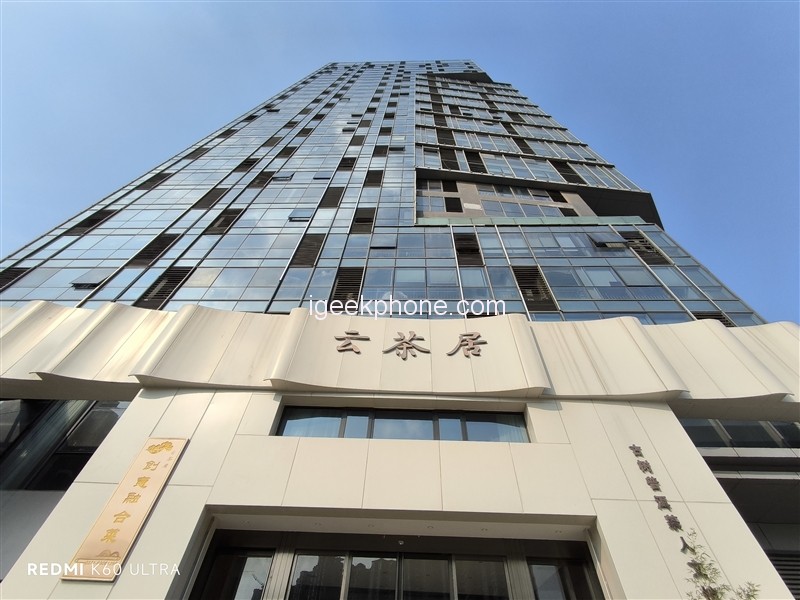
The 8-megapixel ultra-wide-angle lens has the distortion correction function turned on by default, and the captured picture eliminates the convexity of the barrel. Still, the color is a bit lighter than the primary camera, and the resolution is not exceptionally high. Fully able to meet daily use.
In night scenes, the outsole lens of the Sony IMX800 can highlight its advantages even more.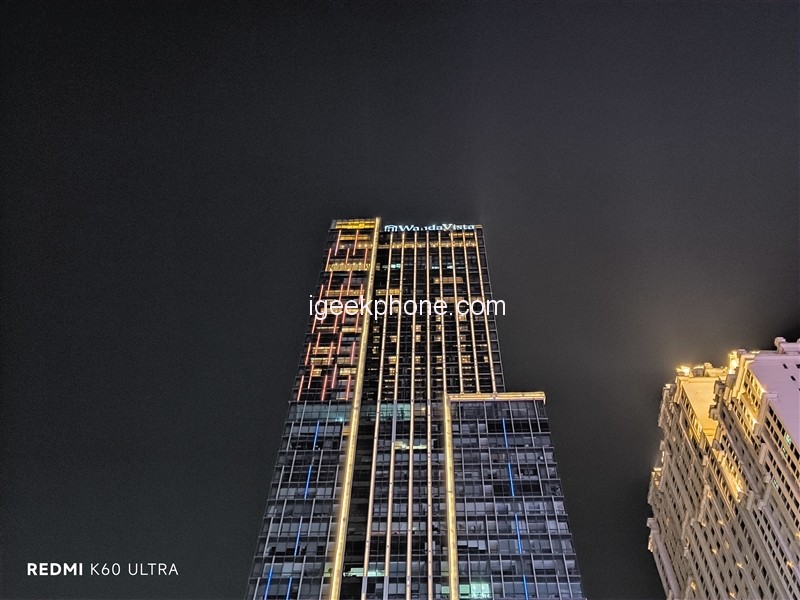
With a photosensitive area of 1/1.56 inches, the exposure can be controlled at about 1 second when taking pictures in night scene mode. Combined with OIS optical and EIS electronic dual anti-shake, the image is no longer afraid of shaking, and the idea is brighter quickly. It also eliminates the smearing that is full of noise.
Redmi K60 Ultra Battery
For the first time, the Redmi K60 Ultra releases Xiaomi’s self-developed surging G1 battery management chip and cooperates with the surging P1 fast charging chip to provide a double function of fast charging and prolonging battery life for this 5000mAh battery designed with MTW multi-pole single-cell design. Assure.
With 120W wired fast charging, it can be set to 50% in 8 minutes in extreme speed mode and can be set to 100% in 19 minutes.
In this regard, we tested the charging and battery life of the Redmi K60 Ultra.
Charging test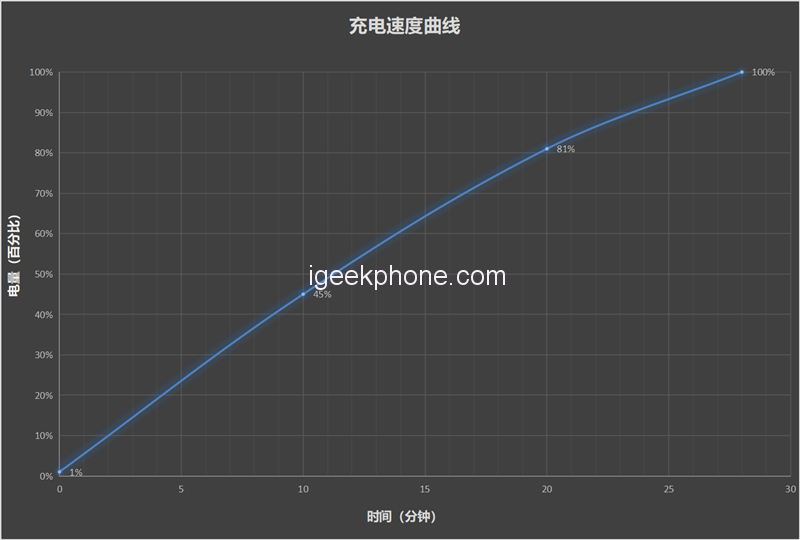
Before the charging test, we turned on the “Fast Charge Acceleration” function in the mobile phone manager so that the mobile phone could obtain the highest charging power for output.
After testing, the battery starts to charge from 1%, 10 minutes to 45%, 20 minutes to 81%, entirely arrested in 28 minutes and can be fully charged in less than half an hour.
Endurance test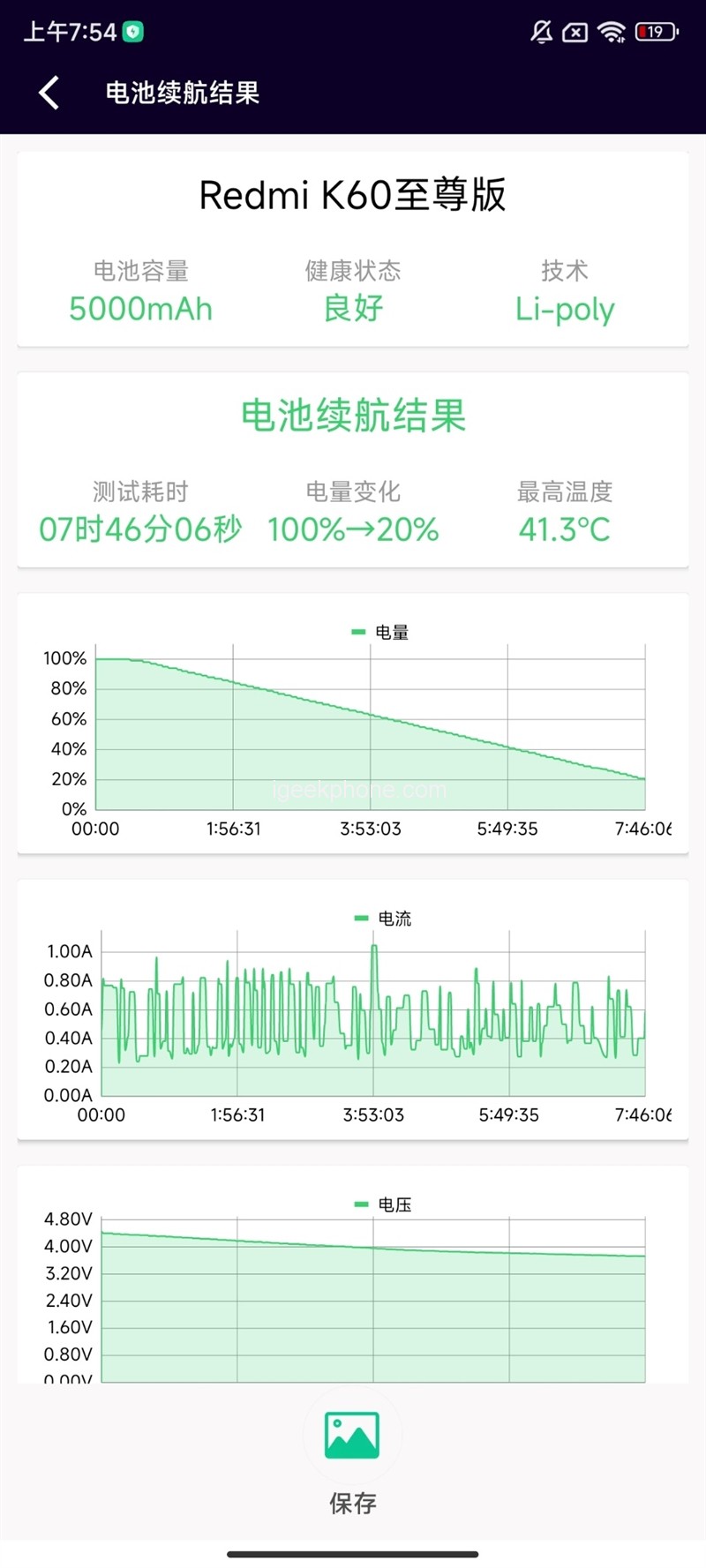
In the battery life test part, we use a professional battery life test tool – the battery dog produced by Kuai Technology.
Regarding test items, we chose the extreme power battery life test. We checked all the test items, including CPU high voltage, CPU multi-threading, AI recognition, picture browsing, video playback, and web browsing, to simulate user usage scenarios and restore the actual load to the greatest extent. Infinitely close to the real power consumption.
Before the test, we set the screen brightness of the Redmi K60 Ultra to 50%, turned off the automatic brightness, the refresh rate was the default, and then started the test with 100% power.
When the remaining power was measured to 20%, the battery dog gave a battery life of 7 hours and 46 minutes. After conversion, the entire battery life of the K60 Ultra is about 9 hours and 45 minutes, and the battery life of nearly 10 hours can fully meet daily needs. Use as needed for the day.
Read Also: Redmi K60 Ultra Review: The Flagship Killer of 2023?
Verdict of Redmi K60 Ultra
In the iterative process of Redmi mobile phone products, cost performance has always been adhered to, from the original separate hardware stacking to the later software and hardware collocation. Now to the fine control of the K60 Ultra and the subversive tradition brought by the independent display chip. The game’s performance is the ultimate display of Redmi’s commitment to creating a “post-performance era.”
The combination of the Dimensity 9200+ chip and the independent display X7 chip has brought the Redmi K60 Ultra to an unprecedented peak state in terms of hardware, and the performance tuning of the Furious Engine 2.0 is more like the glue between the two, allowing the performance of the hardware to be improved. Perfect performance: the frame rate can be doubled in the game, and the power consumption is almost the same. This also means that even in long-term games or high-load tasks, the mobile phone can maintain stable performance and will not. In the case of overheating or freezing, in terms of performance, it is worthy of the word “furious.”
Secondly, the K60 Ultra introduces the surging G1 battery management chip, allowing 120W single-cell fast charging, faster speed, higher safety factor, and longer battery life. In this version, you can enjoy the charging experience that only top flagship phones have.
Finally, the IP68 dustproof and waterproof rating released for the first time is enough to prove that the airtightness of the Redmi K60 Ultra is reliable enough, and we are no longer afraid of sweat, rain, or splashing water in life, allowing us to use it outdoors with peace of mind.
Overall, the Redmi K60 Ultra is the mobile phone with the best comprehensive experience at the same price you can find. The most vital core of MediaTek and the independent display chip X7 make the game screen and frame rate directly pull to the top; the same model of Mi 13 Ultra The Huaxing Optoelectronics C7 screen, its display quality is not inferior to that of Samsung; 120W fast charging is combined with P1 fast charging and G1 battery management dual chips, and the safety and life of the battery are improved to a higher level. The only shortcoming is that it is gone. Wireless charging, but seeing the price starting at 2599 yuan, what kind of bicycle do you need?










